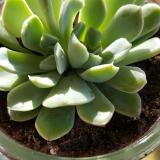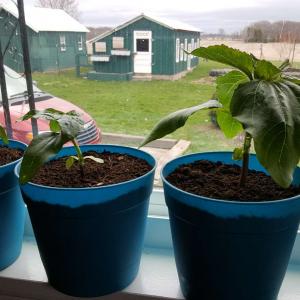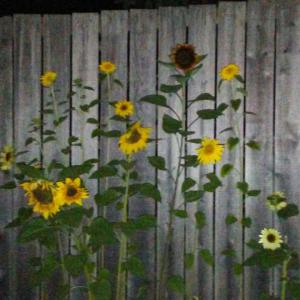求助
Pommy Mommy
2018年06月11日

I THOUGHT planted "Dwarf Sunflowers" seeds in both pots, at the same time a few weeks ago but as you can obviously see, they're two completely different looking plants. I KNOW (for sure) the brown, octagon shaped pot is sunflowers. But I have NO IDEA what the seedlings are in the round terracotta pot. P] 00P]
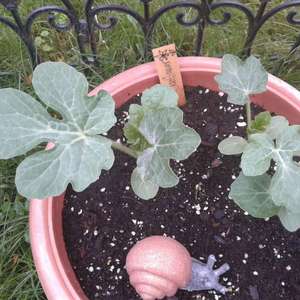
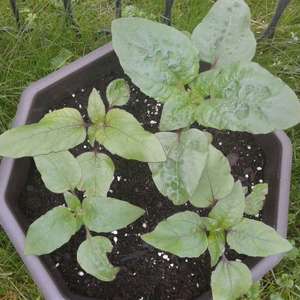


1
0
Pommy Mommy:I think you're right! I think they are Crimson watermelons and they are huge now no fruit yet but I'll post them soon as I find any
sunnyzou:most like a kind of melon
成长记
Shami
2018年04月24日

The regular sunflowers are shorter than the hybrid. Maybe the hybrid sunflowers shouldn't be potted? Date: April 25, 2018
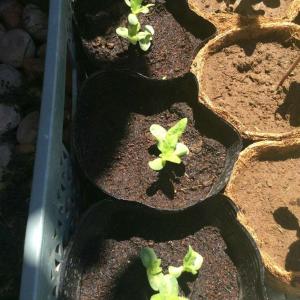
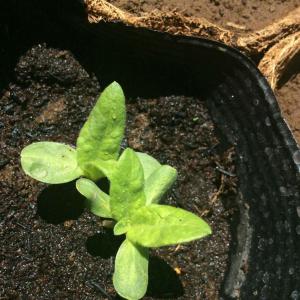


0
0
成长记
Shami
2018年04月23日

These are the regular sunflower I planted 2 or 3 days after the hybrid sunflowers.


0
0
成长记
Shami
2018年04月18日

New leaves start to form. One sunflower did not sprout. :( The other sunflowers I planted the other day are starting to sprout! ☺ Date: April 19, 2018
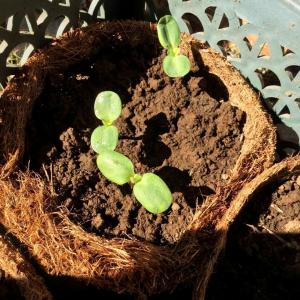
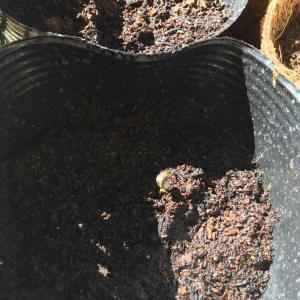
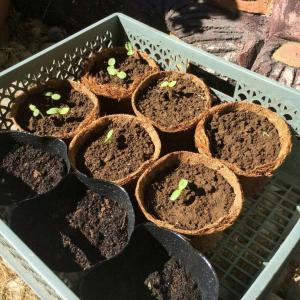



0
0
成长记
Shami
2018年04月16日

I tried planting these regular sunflowers today. This time I did not bury them too deep. I used soil-less medium in planting them. 3 of these pots are those sunflowers! Date: April 16, 2018
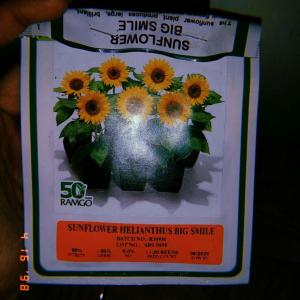
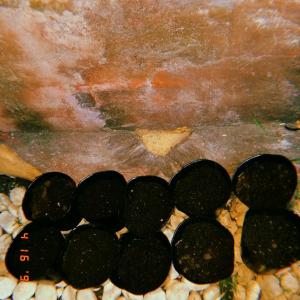
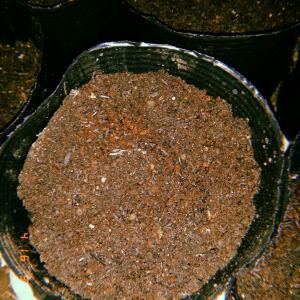



0
0
成长记
Shami
2018年04月16日

7 of these pots are the poppies along with 3 pots of sunflowers. 🌻 I used soilless medium in planting them.
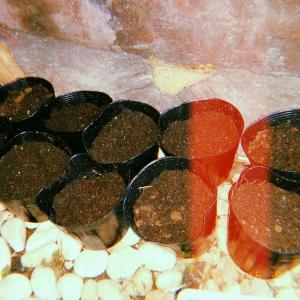

0
0
文章
Dummer. ゛☀
2017年09月28日

Sunflowers (Helianthus annuus) are perhaps one of the easiest flowers that you can grow in the garden. They are so easy to grow that they are frequently used to introduce very young gardeners to the joys of gardening. Many gardeners fondly remember planting the black and white seeds of giant Sunflowers and watching in wonder as they grew to tower into the sky.
But just because Sunflowers are easy to grow does not mean that they should be dismissed from the grown-up garden. The variety of Sunflowers available to the home gardener is absolutely amazing and, as an added bonus, Sunflowers can help attract some local birds to your garden.
Sunflowers come in sizes that range from dwarf varieties, which can be as small as a foot and a half tall, to giant varieties, which grow to be over twelve feet tall. You can find Sunflowers in colors from very pale yellows to dark, burgundy reds and all shades of yellow, red and orange in-between.
Sunflowers also come in a variety of petal counts. While the single layer of petals is still the most common, you can find quite a few Sunflower varieties with double and teddy bear petal layers. All of these sunflower options ensure that when you add these flowers to your garden, it will be anything but blah.
Growing Conditions and General Care
If you decide to add Sunflowers to your garden, there are a few things you will want to keep in mind.
First of all, they are called sunflowers for a reason. They need sun. Make sure that the location you choose for your Sunflowers gets full sun.
Second, you do not need to worry about soil too much. They are not picky about the conditions of the soil, but they are plants. They will do better in better soil.
Third, Sunflower seed shells do contain a substance that is toxic to grass. So, you will need to either harvest the Sunflower heads before the seeds begin to fall out or you will need to plant your Sunflowers in a location where you do not mind any nearby grass being killed.
Fourth, keep in mind the height of the Sunflower variety you have chosen. A giant, twelve foot variety will end up acting very much like a small tree and may shade the surrounding flowers.
As mentioned above, Sunflowers can also help you to attract local birds to your garden. When the growing season is coming to a close, you can harvest your sunflower heads and use some of the seeds to feed the birds over the winter. You have two options when using sunflower seeds to feed the birds. The first is that you can simply leave the Sunflower heads outside for the birds. This option is the easiest but be warned that the birds will make a mess when pulling the seeds out of the Sunflower head. Your other option is to remove the seeds from the head and to put them in your bird feeder. This method is a little more work but will be neater in the long run. Also, putting the seeds in a birdfeeder will also help to keep your feathered friends safe as the birdfeeder will be up off the ground and out of reach of many of the animals that eat birds.
So, while you may have fond memories of tall yellow Sunflowers that you planted as a child, give this old garden favorite a new try and rediscover the world of sunflowers.

But just because Sunflowers are easy to grow does not mean that they should be dismissed from the grown-up garden. The variety of Sunflowers available to the home gardener is absolutely amazing and, as an added bonus, Sunflowers can help attract some local birds to your garden.
Sunflowers come in sizes that range from dwarf varieties, which can be as small as a foot and a half tall, to giant varieties, which grow to be over twelve feet tall. You can find Sunflowers in colors from very pale yellows to dark, burgundy reds and all shades of yellow, red and orange in-between.

Sunflowers also come in a variety of petal counts. While the single layer of petals is still the most common, you can find quite a few Sunflower varieties with double and teddy bear petal layers. All of these sunflower options ensure that when you add these flowers to your garden, it will be anything but blah.
Growing Conditions and General Care
If you decide to add Sunflowers to your garden, there are a few things you will want to keep in mind.
First of all, they are called sunflowers for a reason. They need sun. Make sure that the location you choose for your Sunflowers gets full sun.

Second, you do not need to worry about soil too much. They are not picky about the conditions of the soil, but they are plants. They will do better in better soil.
Third, Sunflower seed shells do contain a substance that is toxic to grass. So, you will need to either harvest the Sunflower heads before the seeds begin to fall out or you will need to plant your Sunflowers in a location where you do not mind any nearby grass being killed.
Fourth, keep in mind the height of the Sunflower variety you have chosen. A giant, twelve foot variety will end up acting very much like a small tree and may shade the surrounding flowers.

As mentioned above, Sunflowers can also help you to attract local birds to your garden. When the growing season is coming to a close, you can harvest your sunflower heads and use some of the seeds to feed the birds over the winter. You have two options when using sunflower seeds to feed the birds. The first is that you can simply leave the Sunflower heads outside for the birds. This option is the easiest but be warned that the birds will make a mess when pulling the seeds out of the Sunflower head. Your other option is to remove the seeds from the head and to put them in your bird feeder. This method is a little more work but will be neater in the long run. Also, putting the seeds in a birdfeeder will also help to keep your feathered friends safe as the birdfeeder will be up off the ground and out of reach of many of the animals that eat birds.

So, while you may have fond memories of tall yellow Sunflowers that you planted as a child, give this old garden favorite a new try and rediscover the world of sunflowers.
1
1
文章
Dummer. ゛☀
2017年09月27日

Ten-foot giant Sunflowers (Helianthus annuus) really can be grown in plant containers (even in small 3-gallon nursery pots). These beautiful native American flowers must be planted in full sun, or they can topple over while trying to reach sun. But growing these beauties in your balcony container garden will attract attention from the people in your neighborhood, as well as a lot of wildlife. The Sunflower’s floret patterns (what eventually turn into seeds) are displayed on the circular flower head in an amazing spiral pattern. This, in addition to making a beautiful flower display, ensures that the most seeds are crammed into the Sunflower’s flower head as possible.
Sunflowers bloom from mid-summer to early fall, and their flower heads are heliotropic, meaning they follow the sun across the sky. But once the Sunflower plant’s stem stiffens and becomes woody (around the time of its bloom), the flower stops following the sun. Although most Sunflowers grow to about 10 feet (3 m), the tallest Sunflower grew to 40 feet (12 m). After planting seeds, expect Sunflowers to be full-grown and blooming within about 3 months. Sunflowers attract wild birds, butterflies and beneficial insects to the balcony garden.
Growing Conditions and General Care
Light: Sunflowers need full sun for 6 to 8 hours each day.
Water: When it comes to watering the Sunflower plant, add one inch of water per week. Compensate if the potting soil dries out from heat or sun.
Fertilizer: Fertilize your Sunflowers regularly with a high-nitrogen liquid plant fertilizer. When a flower head begins to form, switch to a liquid fertilizer with more phosphorous to promote a more spectacular Sunflower bloom.
Temperature: The Sunflower is an annual plant, so you do not need to worry about overwintering this plant indoors. The most important thing to remember with Sunflowers and temperature is to not plant them outdoors until the last frost has passed. If you experience a very hot, dry day, make sure to give extra water to your Sunflower so it does not dry out too much and die.
Pests and Diseases
While Sunflower plants are generally very healthy and immune to common garden pests and diseases, you will find wild birds and squirrels snacking on Sunflower seeds. When you harvest the giant Sunflower heads, make sure to keep them in an area where animals cannot eat the seeds. You may want to leave the heads on the stalk to attract birds to your garden.
Propagation
Collect seeds after allowing the Sunflower to completely dry out (but beware, the flowers won’t look very appealing at this point). Then cut the Sunflower head off and hang it upside down until the seeds dry out. Eat the Sunflower seeds yourself, feed them to wild birds or save them for the next gardening season. Plant Sunflower seeds 1 inch (2.5 cm) deep into the potting soil, and they should germinate within 5 to 10 days.

Sunflowers bloom from mid-summer to early fall, and their flower heads are heliotropic, meaning they follow the sun across the sky. But once the Sunflower plant’s stem stiffens and becomes woody (around the time of its bloom), the flower stops following the sun. Although most Sunflowers grow to about 10 feet (3 m), the tallest Sunflower grew to 40 feet (12 m). After planting seeds, expect Sunflowers to be full-grown and blooming within about 3 months. Sunflowers attract wild birds, butterflies and beneficial insects to the balcony garden.

Growing Conditions and General Care
Light: Sunflowers need full sun for 6 to 8 hours each day.
Water: When it comes to watering the Sunflower plant, add one inch of water per week. Compensate if the potting soil dries out from heat or sun.
Fertilizer: Fertilize your Sunflowers regularly with a high-nitrogen liquid plant fertilizer. When a flower head begins to form, switch to a liquid fertilizer with more phosphorous to promote a more spectacular Sunflower bloom.

Temperature: The Sunflower is an annual plant, so you do not need to worry about overwintering this plant indoors. The most important thing to remember with Sunflowers and temperature is to not plant them outdoors until the last frost has passed. If you experience a very hot, dry day, make sure to give extra water to your Sunflower so it does not dry out too much and die.
Pests and Diseases
While Sunflower plants are generally very healthy and immune to common garden pests and diseases, you will find wild birds and squirrels snacking on Sunflower seeds. When you harvest the giant Sunflower heads, make sure to keep them in an area where animals cannot eat the seeds. You may want to leave the heads on the stalk to attract birds to your garden.

Propagation
Collect seeds after allowing the Sunflower to completely dry out (but beware, the flowers won’t look very appealing at this point). Then cut the Sunflower head off and hang it upside down until the seeds dry out. Eat the Sunflower seeds yourself, feed them to wild birds or save them for the next gardening season. Plant Sunflower seeds 1 inch (2.5 cm) deep into the potting soil, and they should germinate within 5 to 10 days.
0
0
文章
Dummer. ゛☀
2017年08月15日

This lovely sunflower forms largeattractive clumps up to a metre in height. The easiest way to distinguish Arrowleaf Balsamroot from other sunflowers is by the silvery-green arrow-head-shaped leaves.

Distribution
The range of the plant extends from British Columbia and south to Colorado and central California. It is one of many sunflowers found in the Rocky Mountains.

Habitat and Blooming Times
Arrowleaf Balsamroot grows on well-drained soil in open woodland sites exposed to plenty of sunshine. It blooms from late May to July and grows
Uses
American Indians used the seeds to make a kind of flour called pinole.

Etymology
Balsamorhiza, the genus name, means 'balsam root'. The specific epithet sagittata means 'arrow shaped' - a reference to the leaves of this plant, which are shaped like arrowheads.

Distribution
The range of the plant extends from British Columbia and south to Colorado and central California. It is one of many sunflowers found in the Rocky Mountains.

Habitat and Blooming Times
Arrowleaf Balsamroot grows on well-drained soil in open woodland sites exposed to plenty of sunshine. It blooms from late May to July and grows
Uses
American Indians used the seeds to make a kind of flour called pinole.

Etymology
Balsamorhiza, the genus name, means 'balsam root'. The specific epithet sagittata means 'arrow shaped' - a reference to the leaves of this plant, which are shaped like arrowheads.
0
0
文章
Miss Chen
2017年08月14日

Sunflowers (Helianthus annuus cvs.) don't just come in yellow anymore. The introduction of new cultivars offers gardeners a variety of options for color, flower shape and mature plant size, including several with purple petals. All cultivars, however, have similar growing requirements.

Sunflower Types
About 50 species of sunflowers exist in the Helianthus genus. Thirty-eight of these are perennial, but annual sunflowers are the ones most often grown in the home garden.
Sunflower colors range in hue from the traditional golds and yellows, to white, rose, red, purplish burgundy and chocolate brown. Annual sunflower varieties with dark burgundy-purple petals include "Chianti" and "Claret." The variety "Ruby Moon" offers two-tone burgundy petals with creamy white tips.
Best Locations
As their name suggests, sunflowers require full sun. Ideally, plant sunflowers in locations with six to eight hours of direct sunlight every day. Sunflowers thrive in fertile, well-drained soil. Amend soils that drain poorly or lack sufficient nutrients by spreading a 2- to 3-inch layer of plant-based organic matter or a 1-inch layer of well-composted manure over the surface. Work this in to a depth of 6 to 8 inches.
Planting Sunflowers
Most sunflowers grown in a home garden are started from seed. To direct-sow outside, plant seeds 1 to 2 inches deep and 6 inches apart in the spring after the threat of frost in your area has passed and soil temperatures reach 55 to 60 degrees Fahrenheit. Cover the planting with netting until seeds germinate if birds begin scavenging them.
You can also start sunflower seeds indoors. They don't recover well when transplanted, so start seeds in biodegradable containers you can just pop in the ground.

Ongoing Care
Feed sunflower plants sparingly. Excess fertilizer results in weak, leafy growth and few flowers. A slow-release fertilizer with a balanced N-P-K ratio, such as 14-14-14, applied once in midsummer works well. Scatter the fertilizer over the bed at a rate of 1/4 pound per 10 square feet, or as indicated on the packaging, and gently work it into the top 1 to 3 inches of soil.
Once established, sunflowers are very tolerant of drought. If you plan to harvest the edible seeds, though, watering the plants at the first sign of wilting encourages good seed development. In the absence of rain, water at least once a week to soak the soil and encourage deep root systems that keep plants from blowing over in the wind.

Sunflower Types
About 50 species of sunflowers exist in the Helianthus genus. Thirty-eight of these are perennial, but annual sunflowers are the ones most often grown in the home garden.
Sunflower colors range in hue from the traditional golds and yellows, to white, rose, red, purplish burgundy and chocolate brown. Annual sunflower varieties with dark burgundy-purple petals include "Chianti" and "Claret." The variety "Ruby Moon" offers two-tone burgundy petals with creamy white tips.
Best Locations
As their name suggests, sunflowers require full sun. Ideally, plant sunflowers in locations with six to eight hours of direct sunlight every day. Sunflowers thrive in fertile, well-drained soil. Amend soils that drain poorly or lack sufficient nutrients by spreading a 2- to 3-inch layer of plant-based organic matter or a 1-inch layer of well-composted manure over the surface. Work this in to a depth of 6 to 8 inches.
Planting Sunflowers
Most sunflowers grown in a home garden are started from seed. To direct-sow outside, plant seeds 1 to 2 inches deep and 6 inches apart in the spring after the threat of frost in your area has passed and soil temperatures reach 55 to 60 degrees Fahrenheit. Cover the planting with netting until seeds germinate if birds begin scavenging them.
You can also start sunflower seeds indoors. They don't recover well when transplanted, so start seeds in biodegradable containers you can just pop in the ground.

Ongoing Care
Feed sunflower plants sparingly. Excess fertilizer results in weak, leafy growth and few flowers. A slow-release fertilizer with a balanced N-P-K ratio, such as 14-14-14, applied once in midsummer works well. Scatter the fertilizer over the bed at a rate of 1/4 pound per 10 square feet, or as indicated on the packaging, and gently work it into the top 1 to 3 inches of soil.
Once established, sunflowers are very tolerant of drought. If you plan to harvest the edible seeds, though, watering the plants at the first sign of wilting encourages good seed development. In the absence of rain, water at least once a week to soak the soil and encourage deep root systems that keep plants from blowing over in the wind.
0
0
文章
Dummer. ゛☀
2017年08月08日

This lovely sunflower forms largeattractive clumps up to a metre in height. The easiest way to distinguish Arrowleaf Balsamroot from other sunflowers is by the silvery-green arrow-head-shaped leaves.
Distribution
The range of the plant extends from British Columbia and south to Colorado and central California. It is one of many sunflowers found in the Rocky Mountains.
Habitat and Blooming Times
Arrowleaf Balsamroot grows on well-drained soil in open woodland sites exposed to plenty of sunshine. It blooms from late May to July and grows
Uses
American Indians used the seeds to make a kind of flour called pinole.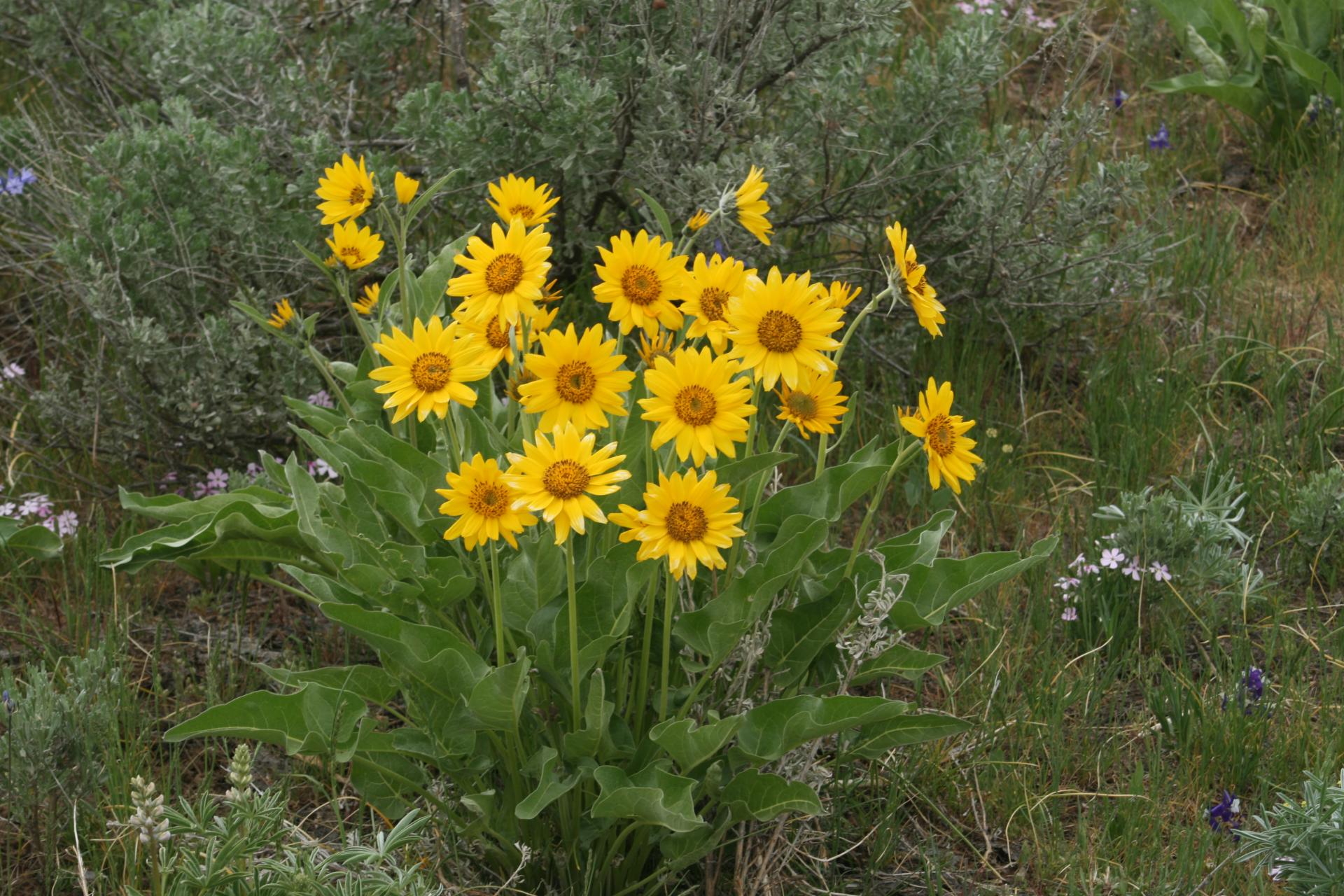
Etymology
Balsamorhiza, the genus name, means 'balsam root'. The specific epithet sagittata means 'arrow shaped' - a reference to the leaves of this plant, which are shaped like arrowheads.

Distribution
The range of the plant extends from British Columbia and south to Colorado and central California. It is one of many sunflowers found in the Rocky Mountains.
Habitat and Blooming Times
Arrowleaf Balsamroot grows on well-drained soil in open woodland sites exposed to plenty of sunshine. It blooms from late May to July and grows
Uses
American Indians used the seeds to make a kind of flour called pinole.

Etymology
Balsamorhiza, the genus name, means 'balsam root'. The specific epithet sagittata means 'arrow shaped' - a reference to the leaves of this plant, which are shaped like arrowheads.
0
0



